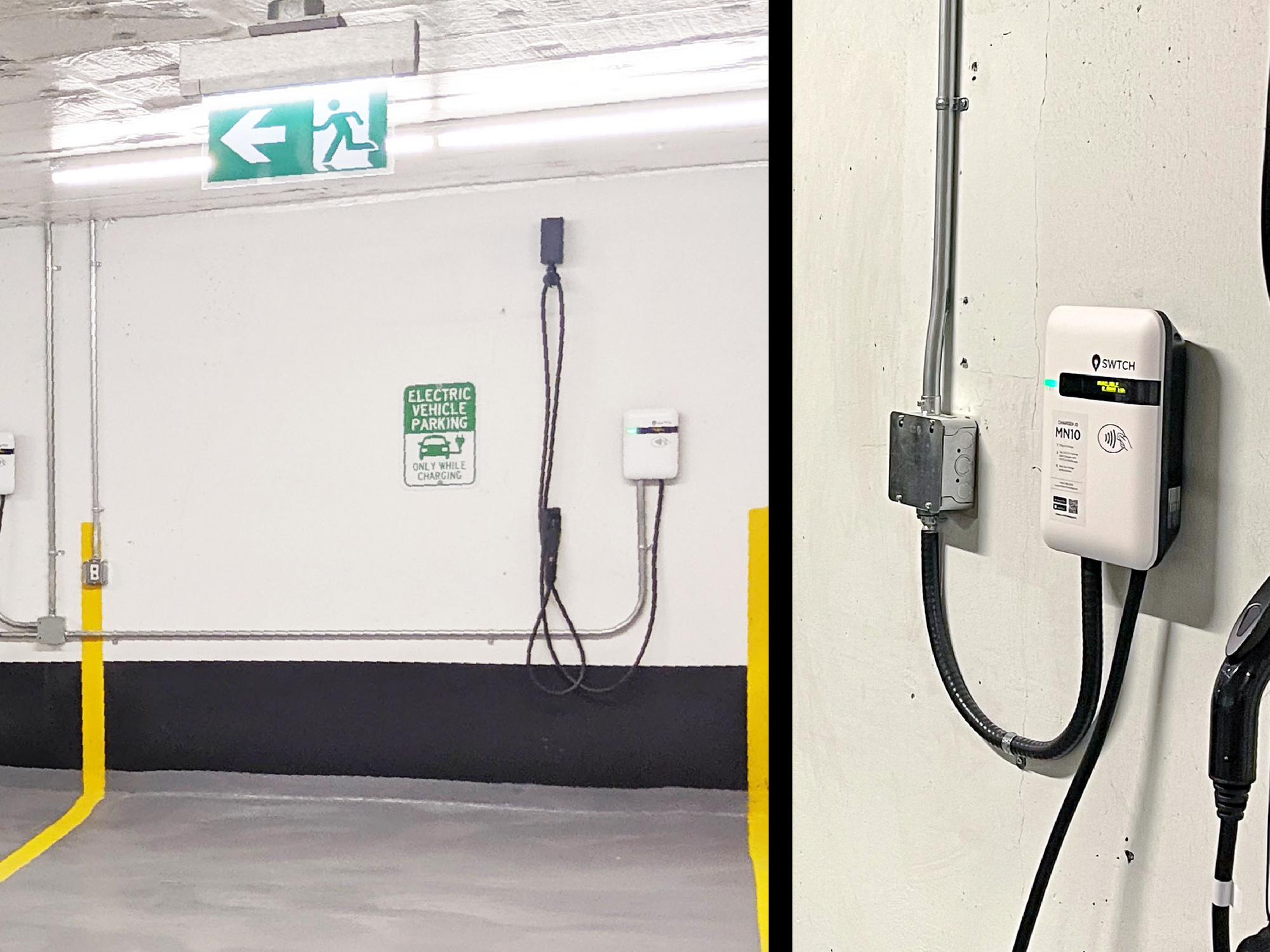How SWTCH Energy Plans to Take On LA EV Charging
David Shultz reports on clean technology and electric vehicles, among other industries, for dot.LA. His writing has appeared in The Atlantic, Outside, Nautilus and many other publications.

One of the most often-cited hurdles on the road to widespread EV adoption is the problem of multi-tenant buildings. While it’s easy to install a level 2 charger in a typical home, nearly a third of US residents live in multi-family buildings, and 36% of Americans rent their homes.
Which means there’s a lot of people who don’t have their own garage or assigned parking space to build a charger inside of. The result? At-home charging–arguably the single greatest perk of having an electric vehicle–is often restricted to the wealthiest segments of the population that can afford a house and pay for charger installation, while the rest of the population has to rely on public charging, which is typically more expensive and often unreliable.
A variety of state- and national-level policies are aiming to help smooth out this disparity, including the Inflation Reduction Act, which provides a 30% tax credit up to $1,000 for installing new chargers in low-income or non-urban areas. California’s Cal eVIP Program, can provide further funding as well, sometimes up to 75% of the total installation cost. Buoyed by the incoming funding and a spate of new demand as EV ownership continues to tick up, charger companies are racing to figure out how to crack the condo/apartment market.
SWTCH Energy is one such company. Headquartered in Toronto, Canada, SWTCH has recently moved into Los Angeles to test out its latest chargers and software in one of most advanced EV markets. “LA is a big market for EV charging,” says SWTCH's Head of Finance and Strategy Sam Bordenave. “It's also a big, urban city, where you have lots of multifamily buildings and a lot of older buildings. So it's a great fit to make sure that we can deploy this solution at scale.”
Simply put, SWTCH works with property owners to install chargers that renters can use. Bordenave says that the as the EV transition has begun to pick up steam, property owners are increasingly looking to add chargers that increase their property value and help retain tenants. “We're seeing a lot of building owners and real estate companies come and talk to us,” Li says. “What they tell us is, oftentimes, they see tenants that are banging their doors, saying, ‘Hey, I have an EV! Please deploy a charger.’”
In the multi-tenant charging space, SWTCH is competing with industry giants like Chargepoint, Lectron, Juicebox, and of course, Tesla. But SWTCH brings a uniquely singular focus on multi-tenant buildings, and some new tech to support that goal.
Yesterday, the company announced a new software component to its platform, called “SWTCH Control,” aimed at making it easier and safer to install more chargers on existing infrastructure without the need for electrical upgrades. At its core, the software is a dynamic load management system, which monitors what’s going on with each of the connected chargers and what’s happening in the electrical grid at large. “We're able to, at every instant, in real time, calculate the available capacity, the electrical capacity in the building, and then reallocate that capacity to the chargers,” explains Bordenave. Eventually, Tenants should even be able to enter what time they’d like their vehicle to be charged by, and then the software will triage those needs against the price of electricity and how much capacity is available to the local grid. For example, if it’s 4pm and you don’t need your car until tomorrow morning, SWTCH could begin charging the vehicle later in the evening when energy is cheaper and the grid demand is lower.
It may sound nerdy and technical, but SWTCH says the flexibility from their platform is allowing the company to install up to ten times more chargers into multi-tenant building electrical systems, and eliminating–or at least postponing–the need for costly infrastructure upgrades. The software is cloud-based and can be applied to existing SWTCH chargers over the air. In some cases, Bordenave says, the system may also require a small off-the-shelf sensor to be installed on site as well.
With hundreds of chargers installed in Southern California and more than 10,000 total chargers across North America, SWTCH appears to be in the hunt, at the very least, for a piece of the coming EV pie. If their new Control software works as advertised and can help to eliminate the bottleneck of infrastructure upgrades, it could be massive for both property owners and EV drivers alike.
- Amazon-Backed Electric Truck Maker Rivian Eyes $55 Billion Valuation in Upcoming IPO ›
- Here's How Much It Costs To Charge An Electric Vehicle ›
- LA Has Become a Magnet for EV Charging Startups. Biden's Plan Could Supercharge Them. ›
- GreenWealth Energy Is Here to Tackle California’s Biggest Hurdle to Electrification: Red Tape ›
David Shultz reports on clean technology and electric vehicles, among other industries, for dot.LA. His writing has appeared in The Atlantic, Outside, Nautilus and many other publications.





 Image Source: Tinder
Image Source: Tinder Image Source: Apple
Image Source: Apple